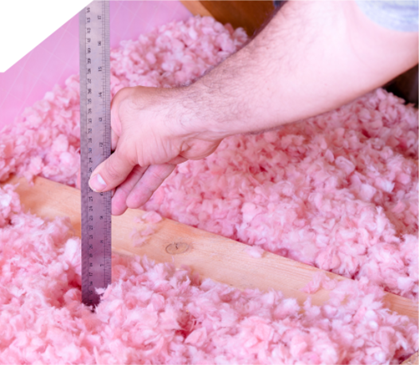What Is the Best R-Value For Insulation?

When you get a new insulation installation, you probably want to know all about your product’s characteristics, from how effective it is to how long it can last without having to be replaced again soon. But there is more to consider, namely: what is the best R-value for insulation?
Property owners who seek new garage, wall, or attic insulation might be scratching their chins about the whole fuss about R-values. But it is a crucial part of choosing the right type of insulation that works best for your home and your overall needs. Arguably the most important function of insulation, though, is temperature regulation; this is accomplished by reducing the rate of heat transfer, which is how heat enters and exits a building. When insulation is improperly installed, damaged, or deteriorated, it's less effective at slowing this movement, which can result in the following issues:
- Drafts or cold spots
- Poor indoor air quality
- One room or side of the house is too cold or hot compared to the rest of your home
- Higher energy costs and frequent HVAC maintenance
If you’re experiencing any of these problems, you may be wondering how you can determine if the insulation in your home is doing its job. One way to check your insulation is by calculating its current R-value. Short for resistance value, this is the numerical measurement of how effectively an insulation material can reduce the rate of heat transfer. A higher R-value generally means the material is better at slowing the movement of heat in and out of your building envelope.
How To Improve R-Value
Although there are some insulation materials that can last up to 15 years, deterioration of the material can significantly reduce R-value over time. There are also multiple factors that can reduce the lifespan of insulation, exponentially increasing the rate of deterioration; the most common damages come from moisture exposure, leaks in the roof or foundation, and pest infestation. When you regularly evaluate and inspect the material throughout your home, retrofitting insulation and air sealing when necessary, you can significantly improve your environment before damaged and deteriorated material begins to impact the comfort and safety of the house.
What R-value Does My Home Need?
Your home has a unique environment that's impacted by a multitude of factors. This includes your climate zone, building codes, and even your regular household habits. The areas you're insulating also have different needs and there isn't necessarily a one-size-fits-all solution for each space. Calculating the R-value your home requires isn't necessarily a simple task; while you can use regional guidelines and even information from industry leaders like the Department of Energy, these are recommendations that won’t get you the same specialization as a thorough investigation of your personal environment.
At Koala Insulation of Cincinnati, our experts are well-versed in home improvements and insulation. Our experts will arrive with state-of-the-art equipment to thoroughly inspect your attic or home and identify any areas in need of repair or improvement. By hiring a Koala Insulation expert, you not only get to enjoy a more efficient home faster, but you also get to benefit from the years of energy savings that professionally installed insulation will bring.
Find Your Location


Get a quote


